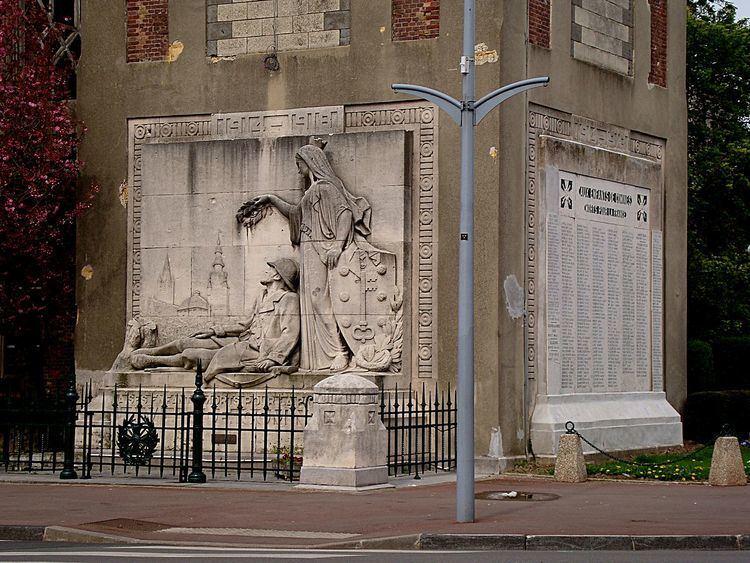Name Adolphe Masselot | Died 1953 | |
 | ||
Adolphe Eduard Masselot (1877–1953) was a French sculptor who is best known for his work on war memorials for which there was a huge demand after 1918. Initially he worked with Maurice Ringot. Later he would bring his sons into the business, teaching and mentoring them in the process, and ultimately forming Societe Alphonse Masselot. After World War II, Masselot founded a foundry with his sons.
Contents
Early life
Masselot, son of Joseph Masselot (d. 1889), was born about 26 December 1877, in Lille, Nord-Pas-de-Calais, France. The family lived in central Lille near Notre Dame de Fives cathedral, east of the Grand' Place.
While in Lille, Masselot studied at the Saint-Pierre Institute and then attended a school of design and architecture where he learned how to sculpt. He attended the Ecole nationale superieure des Beaux-Arts between 1895 and 1900, when he was between 18 to 23 years of age. At the age of 18 he was awarded first prize for sculpture, under the direction of M. Boutry. In 1898 he spent three days competing for a departmental scholarship and won several medals for his work.
Career
Prior to World War I, Masselot was director of the "Lille Cinema" and when in 1918 he returned from military service he was persuaded by fellow sculptor Maurice Ringot to join him in Normandy and there they worked together on monument aux morts (war memorials) in Caudebec-en-Caux, La Mailleraye-sur-Seine and other communes. Masselot began to teach his sons and founded the family company Societe Alphonse Masselot. Many commissions came Masselot's way including the monument at Mont Kemmel to all the French soldiers who died in the 1914–1918 war in Belgium. As well as the monument aux morts at Comines, he also worked on that at Deulemont.
Monument aux morts at Comines
Comines lies on the Franco-Belgian border and is split into two parts: Comines (France) and Comines (Belgium), all part of the municipality of Comines-Warneton. The Comines monument aux morts lies at the foot of the campanile of the parish church of Saint Chrysole. This campanile replaced the old Belfry and has three bells, one of which is called the "cloche des morts" and bears the inscription "Enfants de Comines tues pendant la guerre franco-allemande de 1914–1918". Comines had been virtually destroyed during the war and the architects Maurice Storez and Dom Paul Bellot were charged with the rebuilding of the church whilst Louis-Marie Cordonnier was the architect for the new town hall and Belfry. Masselot's monument aux morts consists of a splendid bas-relief and in the background Masselot has carved the town of Comines as it was before the war with its 1623 Belfry and 1701 town hall. In the centre of the bas-relief a woman kneels and places a crown of laurels onto the head of a dying soldier.
Other works
Working with Robert Coin and Leon Morice Masselot also worked on the Calvary at the Basilique Sainte-Therese in Lisieux. He also worked on a statue of the Archangel Saint Michel at the parish church of Saint-Vaast in Armentieres
Personal life and war service
In Lille he married Marguerite Pietin. They were to have four children of which three were boys. He served in the army during the 1914–1918 war and became a prisoner of war. During the 1939–1945 war, his sons served in the forces and two became prisoners of war. After the war Masselot and his sons started an aluminium foundry.
